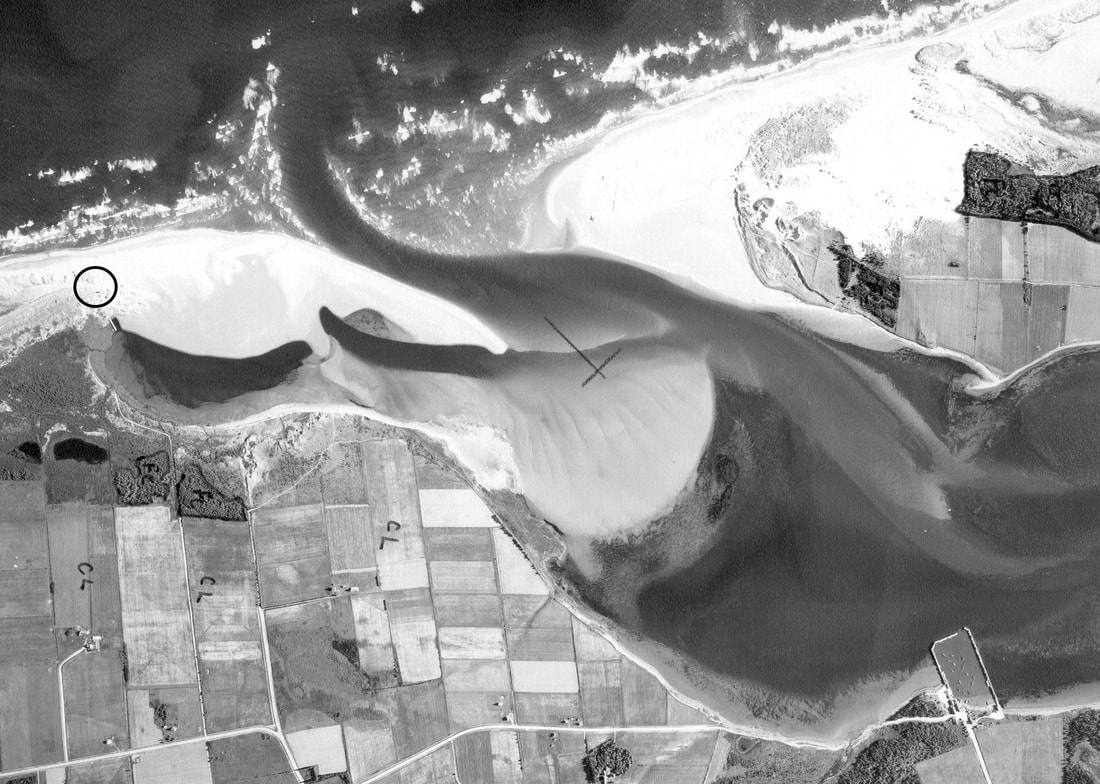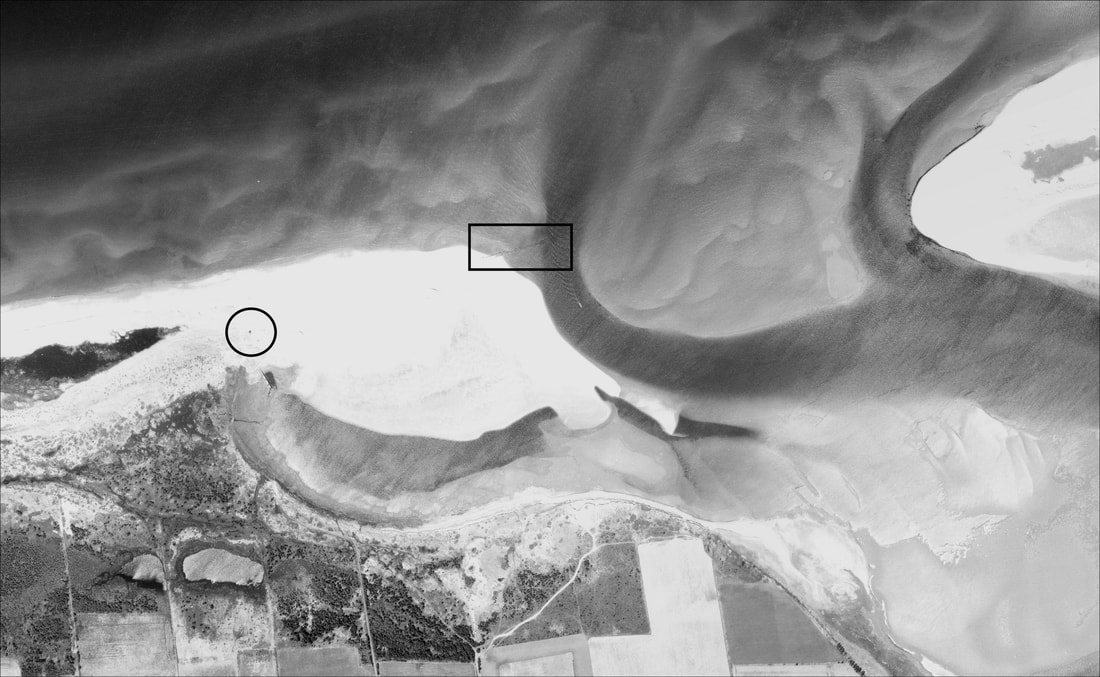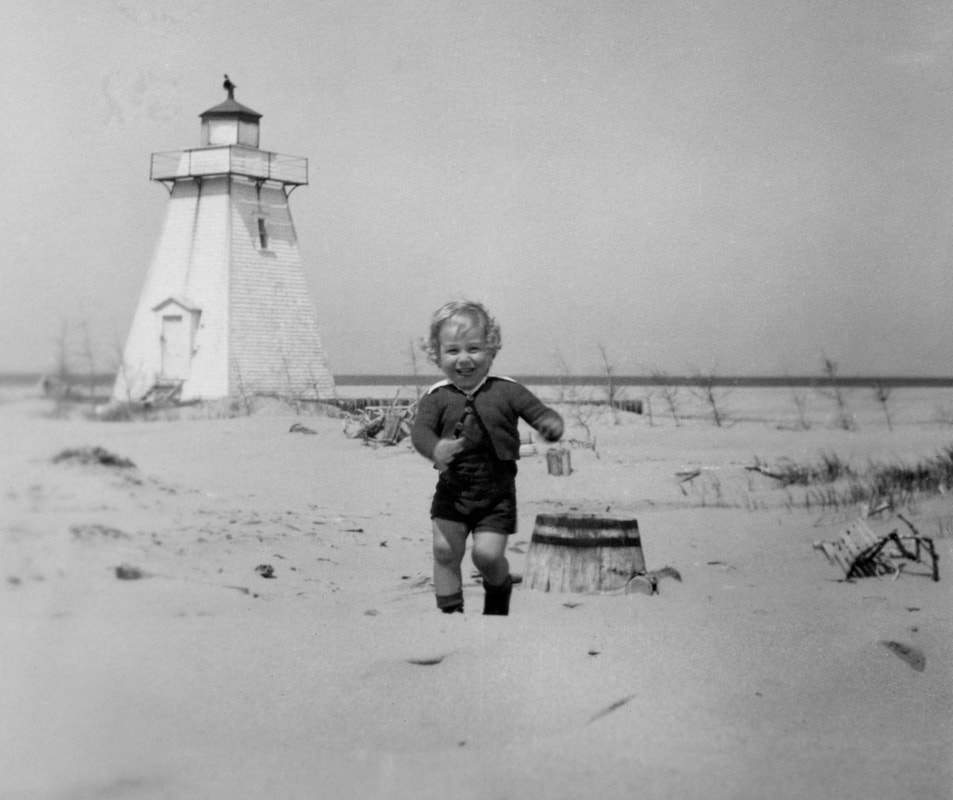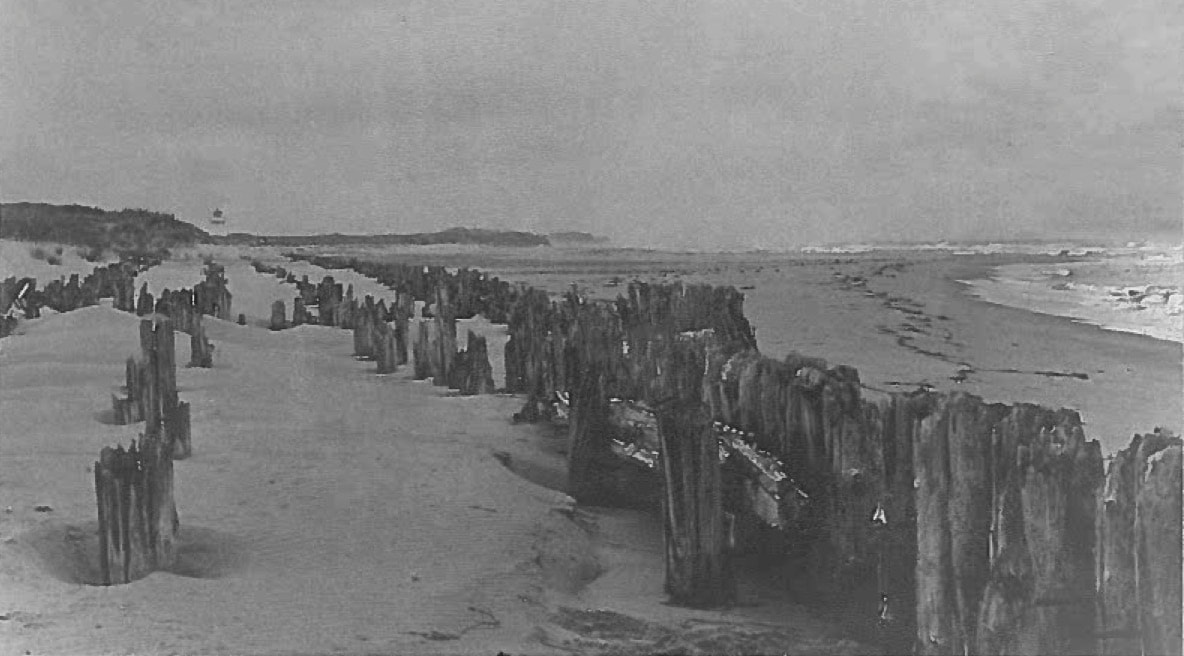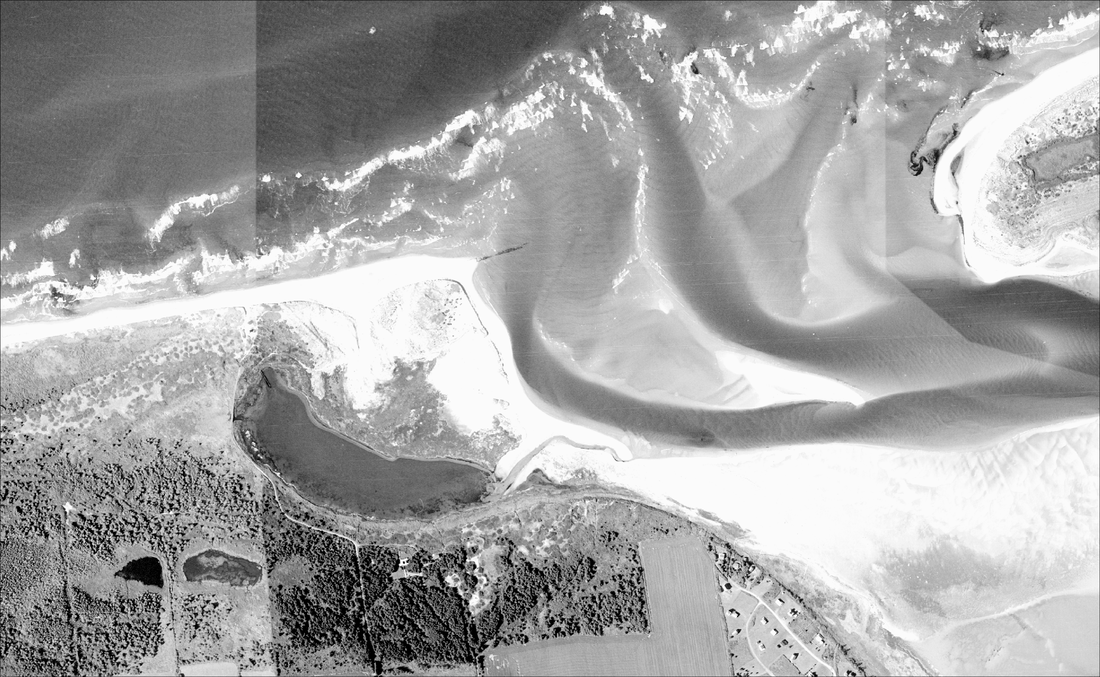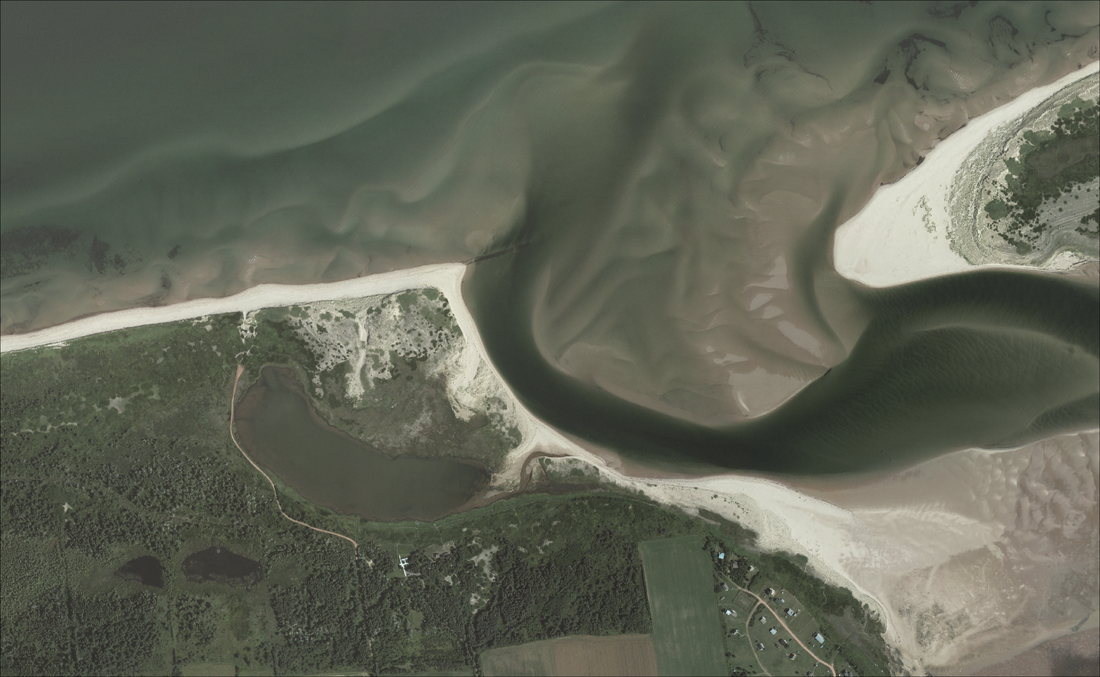By the late 1940s, the breakwaters that had been intended to provide deeper water for boats had instead served to collect the drifting sand and close the channel beside the lighthouse. With larger, motorized boats, Red Head Harbour was constructed along the bay and the lighthouse site was abandoned to the elements.
Banner image: Postcard of St. Peters Harbour Lighthouse from the PEI Postcards Collection, UPEI Robertson Library. Undated. Given photos below, it would appear to be circa 1950.
Banner image: Postcard of St. Peters Harbour Lighthouse from the PEI Postcards Collection, UPEI Robertson Library. Undated. Given photos below, it would appear to be circa 1950.
By the turn of the new century, farms had been turned to recreational property and Lighthouse Road extended to the front lighthouse tower. A portion of the eastern breakwater had been removed to allow for navigation, and the western breakwater and a section of the wharf were buried in sand dunes.
Aerial photo surveys of St. Peters Harbour, 2000 and 2010. Note scar from removed breakwater with new channel to the right, and new road extending to lighthouse. Images courtesy Government of Prince Edward Island; image capture with ArcGIS, georeferenced by the UPEI GeoREACH Lab.
For further reading:
- Joshua MacFadyen, Swallowed by the Sea/shore, Network in Canadian History and the Environment (NiCHE), 2013
